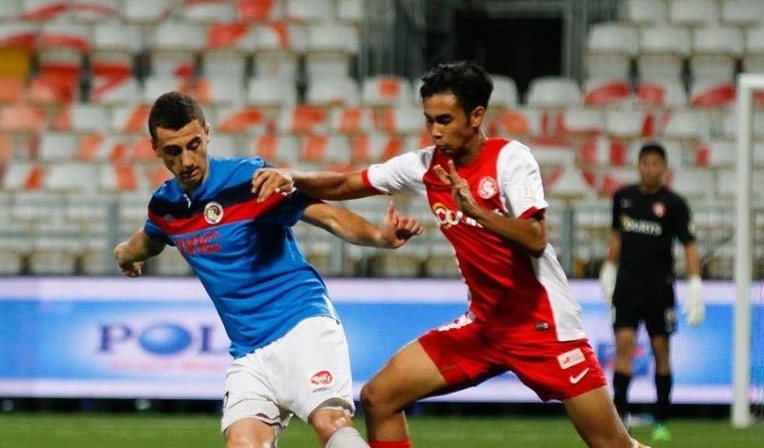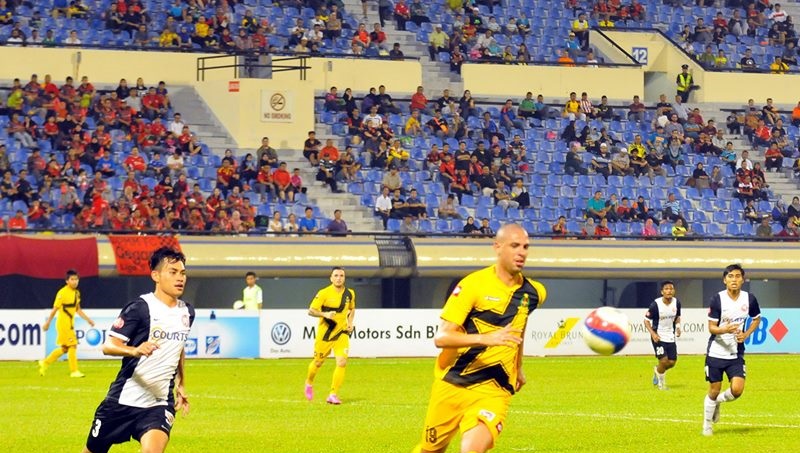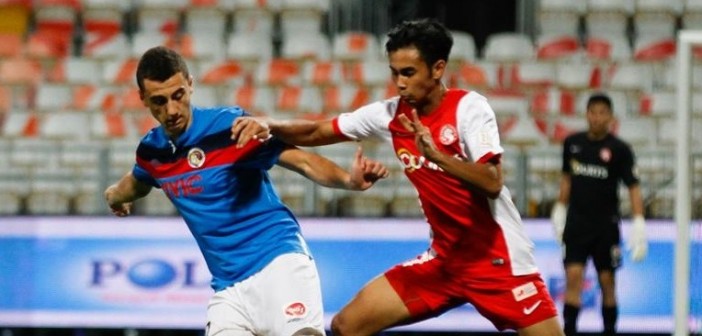The struggles of Singapore’s only professional football league have long been well-illustrated in the media. Poor attendances, all-out brawls between players and sub-par refereeing are just some of the problems plaguing Singapore’s domestic league. Despite the FAS’s yearly reviews, the same problems persist or even worsen. Attendances have fallen steadily over the last few seasons, ultimately resulting in quieter stadiums and less motivated professionals.
The S-League is no longer a product that appeals to the public unlike the heyday of the 1990s and early 2000s. The S-League today seems to be a much criticised league, at times a joke among Singaporeans. This is despite the fact that the S-League has served as the main conveyor belt of national talent over the years, producing the likes of Indra Shahdan Daud and Noh Alam Shah.
With all the problems facing the league, there have been calls from the local football fraternity to relegate the S-League to a Semi-Pro one. While it might seem like a step backward for Singapore football, here are three reasons why this option might not be so bad after all.

Playing in half-empty stadiums in the professional S-League is bread and butter for one of Singapore’s brightest talents, Adam Swandi. Photo credit: Great Eastern Yeo’s S League Facebook Page
1. Lack of rivalry among clubs due to geographical size of Singapore
Singapore is simply too small — no one actually cares about a eastern derby between Tampines Rovers (formerly based in Tampines) and Geylang International (based in Bedok) when the distance between these two areas is a mere 5 km. There is absolutely no rivalry to speak of. People do not feel connected to their clubs and there is no sense of belonging. This is unlike the Malaysia Cup days when Singapore travelled around Malaysia to compete against Malaysian state teams. People felt a sense of belonging to their home country and the support naturally came.
This brings up the question, is Singapore actually only big enough to have only one sustainable club rather than a league of its own? Well, the answer is no. We can convert the S-league to a semi-pro one and form a few teams similar to that of the current Singaporean outfit based in Malaysia, LionsXii. These teams can then be sent to compete in suitable foreign leagues like the Thai Premier League or the upcoming Asean Super League.
Some may argue that having so few clubs could potentially be damaging the pipeline for national players, but when you take a look at our local S-league, there are actually only six local clubs, not including the U23-outfit Courts Young Lions. Instead of trying so hard to create our own sustainable professional league, why not channel resources towards another six new professional clubs that will represent Singapore in overseas leagues?
Through this, rivalry between local clubs and foreign clubs would be intensified and fans would be drawn back to the stadium. There will also be a greater sense of belonging and national pride as these clubs are somewhat representing Singapore when they compete in foreign leagues.
2. Better lives for footballers
Footballers in Singapore have a tough life. Their struggles are often well-documented in the media. Unlike fellow professionals from the more glamourous leagues, most S-League footballers often have to find another job to make ends meet once they call time on their playing careers. They are often left lost and unsure about their next step in life. Given that they have spent almost their entire lives playing football, most of them are not equipped with the relevant experience or qualifications to enter the working world.
This is why unlike most countries, being a semi-pro player might actually be more beneficial. Armed with more time, players will be able to take on day jobs to supplement their allowances from football and subsequently lead better lives even when their playing days are over.
Also, given the state of our S-League today, it is probably surprising for those uninformed to know that this is actually a professional league. Since standards on and off the pitch have plummeted to a level no longer befitting of a professional league, securing the players’ future and going semi-pro might be for the better.

Brunei DPMM (in yellow) is one of the three foreign teams in the 10 team S-League. Photo credit: Great Eastern Yeo’s S League Facebook Page.
3. Finances could be channelled towards youth development
Under the current youth system format, there are only three S-League clubs who have youth development teams. Each of the clubs will field six age-group teams ranging from the under-13 to the under-18 teams. These teams together with the National Football Academy teams form the backbone of youth football in Singapore.
When you realise that almost every future national player will come through this system, it is indeed worrying to see such a small talent pool. More can be done; resources can be used more wisely. Instead of focusing on a half-dead S-League which probably isn’t going to see an improvement in standards anytime soon, why not channel the resources towards setting up more youth teams and even improving the quality of the school sports scene?
Just like any system, armed with a solid foundation, it is bound to flourish. The quality of football will go up and when that happens, it will still not be too late to revert back to the option of a professional S-League.




